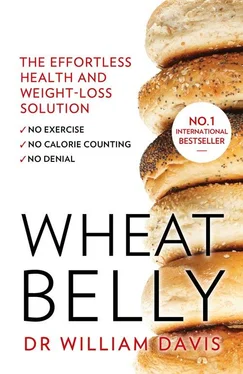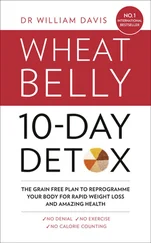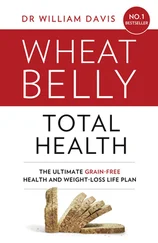1 ...6 7 8 10 11 12 ...19 SMALL IS THE NEW BIG
For as long as humans have practised agriculture, farmers have strived to increase yield. Marrying a woman with a dowry of several acres of farmland was, for many centuries, the primary means of increasing crop yield, arrangements often accompanied by several goats and a sack of rice. The twentieth century introduced mechanised farm machinery, which replaced animal power and increased efficiency and yield with less manpower, providing another incremental increase in yield per acre. While production in the United States was usually sufficient to meet demand (with distribution limited more by poverty than by supply), many other nations worldwide were unable to feed their populations, resulting in widespread hunger.
In modern times, humans have tried to increase yield by creating new strains, crossbreeding different wheats and grasses and generating new genetic varieties in the laboratory. Hybridisation efforts involve techniques such as introgression and ‘back-crossing’, in which offspring of plant breeding are mated with their parents or with different strains of wheat or even other grasses. Such efforts, though first formally described by Austrian priest and botanist Gregor Mendel in 1866, did not begin in earnest until the mid-twentieth century, when concepts such as heterozygosity and gene dominance were better understood. Since Mendel’s early efforts, geneticists have developed elaborate techniques to obtain a desired trait, though much trial and error is still required.
Much of the current world supply of purposefully bred wheat is descended from strains developed at the International Maize and Wheat Improvement Center (IMWIC), located east of Mexico City at the foot of the Sierra Madre Oriental mountains. IMWIC began as an agricultural research programme in 1943 through a collaboration of the Rockefeller Foundation and the Mexican government to help Mexico achieve agricultural self-sufficiency. It grew into an impressive worldwide effort to increase the yield of corn, soya and wheat, with the admirable goal of reducing world hunger. Mexico provided an efficient proving ground for plant hybridisation, since the climate allows two growing seasons per year, cutting the time required to hybridise strains by half. By 1980, these efforts had produced thousands of new strains of wheat, the most high-yielding of which have since been adopted worldwide, from Third World countries to modern industrialised nations, including the United States.
One of the practical difficulties solved during IMWIC’s push to increase yield is that, when large quantities of nitrogen-rich fertiliser are applied to wheat fields, the seed head at the top of the plant grows to enormous proportions. The top-heavy seed head, however, buckles the stalk (what agricultural scientists call ‘lodging’). Buckling kills the plant and makes harvesting problematic. University of Minnesota-trained geneticist Norman Borlaug, working at IMWIC, is credited with developing the exceptionally high-yielding dwarf wheat that was shorter and stockier, allowing the plant to maintain erect posture and resist buckling under the large seed head. Tall stalks are also inefficient; short stalks reach maturity more quickly, which means a shorter growing season with less fertiliser required to generate the otherwise useless stalk.
Dr Borlaug’s wheat-hybridising accomplishments earned him the title of ‘Father of the Green Revolution’ in the agricultural community, as well as the Presidential Medal of Freedom, the Congressional Gold Medal, and the Nobel Peace Prize in 1970. On his death in 2009, the Wall Street Journal eulogised him: ‘More than any other single person, Borlaug showed that nature is no match for human ingenuity in setting the real limits to growth.’ Dr Borlaug lived to see his dream come true: his high-yield dwarf wheat did indeed help solve world hunger, with the wheat crop yield in China, for example, increasing eightfold from 1961 to 1999.
Dwarf wheat today has essentially replaced most other strains of wheat in the United States and much of the world thanks to its extraordinary capacity for high yield. According to Allan Fritz, PhD, professor of wheat breeding at Kansas State University, dwarf and semi-dwarf wheat now comprise more than 99 per cent of all wheat grown worldwide.
BAD BREEDING
The peculiar oversight in the flurry of breeding activity, such as that conducted at IMWIC, was that, despite dramatic changes in the genetic make-up of wheat and other crops, no animal or human safety testing was conducted on the new genetic strains that were created. So intent were the efforts to increase yield, so confident were plant geneticists that hybridisation yielded safe products for human consumption, so urgent was the cause of world hunger, that these products of agricultural research were released into the food supply without human safety concerns being part of the equation.
It was simply assumed that, because hybridisation and breeding efforts yielded plants that remained essentially ‘wheat’, new strains would be perfectly well tolerated by the consuming public. Agricultural scientists, in fact, scoff at the idea that hybridisation has the potential to generate hybrids that are unhealthy for humans. After all, hybridisation techniques have been used, albeit in cruder form, in crops, animals, even humans for centuries. Mate two varieties of tomatoes, you still get tomatoes, right? What’s the problem? The question of animal or human safety testing is never raised. With wheat, it was likewise assumed that variations in gluten content and structure, modifications of other enzymes and proteins, qualities that confer susceptibility or resistance to various plant diseases, would all make their way to humans without consequence.
Judging by research findings of agricultural geneticists, such assumptions may be unfounded and just plain wrong. Analyses of proteins expressed by a wheat hybrid compared to its two parent strains have demonstrated that, while approximately 95 per cent of the proteins expressed in the offspring are the same, 5 per cent are unique, found in neither parent. 5Wheat gluten proteins, in particular, undergo considerable structural change with hybridisation. In one hybridisation experiment, fourteen new gluten proteins were identified in the offspring that were not present in either parent wheat plant. 6Moreover, when compared to century-old strains of wheat, modern strains of Triticum aestivum express a higher quantity of genes for gluten proteins that are associated with coeliac disease. 7
A Good Grain Gone Bad?
Given the genetic distance that has evolved between modern-day wheat and its evolutionary predecessors, is it possible that ancient grains such as emmer and einkorn can be eaten without the unwanted effects that attach to other wheat products?
I decided to put einkorn to the test, grinding 900 grams of whole grain to flour, which I then used to make bread. I also ground conventional organic whole-wheat flour from seed. I made bread from both the einkorn and conventional flour using only water and yeast with no added sugars or flavourings. The einkorn flour looked much like conventional whole-wheat flour, but once water and yeast were added, differences became evident: the light brown dough was less stretchy, less pliable and stickier than a traditional dough, and lacked the mouldability of conventional wheat flour dough. The dough smelt different, too, more like peanut butter rather than the standard neutral smell of dough. It rose less than modern dough, rising just a little, compared to the doubling in size expected of modern bread. And, as Eli Rogosa claimed, the final bread product did indeed taste different: heavier, nutty, with an astringent aftertaste. I could envision this loaf of crude einkorn bread on the tables of third-century BC Amorites or Mesopotamians.
Читать дальше












